Rice shortage in Haiti
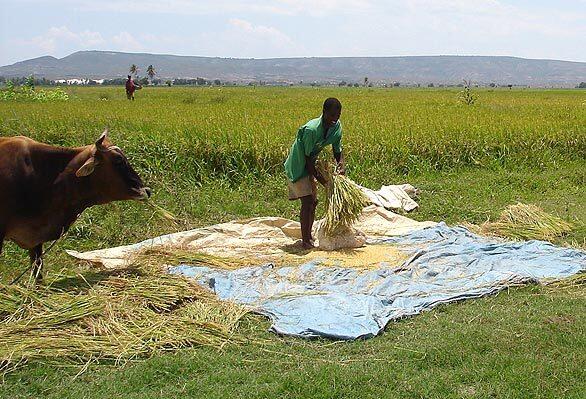
In Haiti, most work to produce rice is done by hand, including threshing the mature stalks to shake loose the paddies, the hull-covered kernels, which then must be milled to remove the brown hulls. (Carol J. Williams / Los Angeles Times)
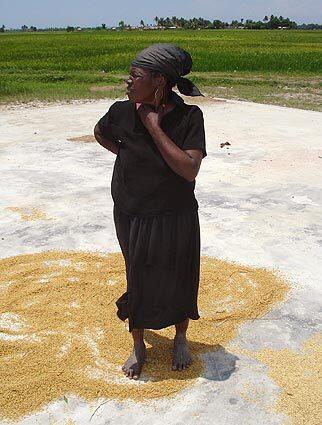
Josiane Desjardin farms a 1.25-acre plot of rice. With rice prices soaring, she would like to expand, but the cost of fertilizer and uncertainty over landownership in Haiti have deterred her. (Carol J. Williams / Los Angeles Times)
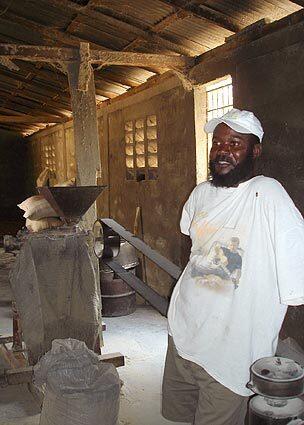
Jean-Louis Reynald used to grow rice in the Artibonite Valley but gave up when the crop became unprofitable. Now, he mills other farmers’ rice paddies with an old diesel-fueled machine that is increasingly expensive to run. (Carol J. Williams / Los Angeles Times)
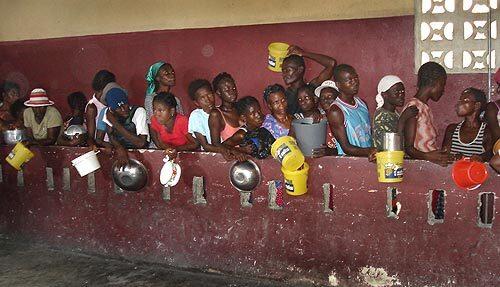
Destitute residents of the Cite Soleil slum in Port-au-Prince line up for hours each day to get a food handout: a cup of rice and a splash of vegetable stew for each family member.
The U.S. rice that is the staple of their diet has doubled in price in little more than a year. (Carol J. Williams / Los Angeles Times)
Advertisement
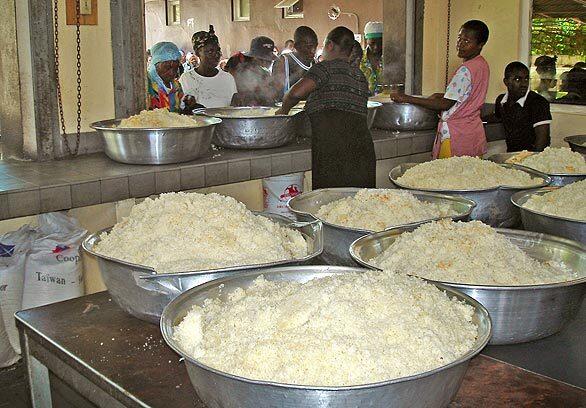
The Food for the Poor charity feeds at least 30,000 people daily in the slums of Port-au-Prince. They get mostly rice with a scoop of watery bean mixture. (Carol J. Williams / Los Angeles Times)
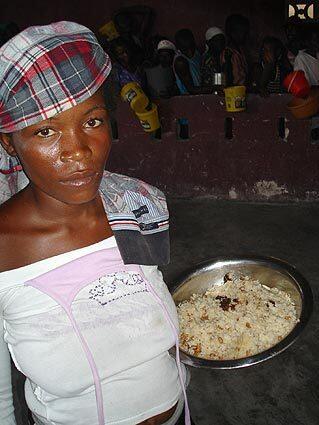
Misterline Meus, 26 and pregnant with her fifth child, has little understanding of the global economic forces that have driven the price of food beyond most Haitians’ ability to buy it. (Carol J. Williams / Los Angeles Times)







